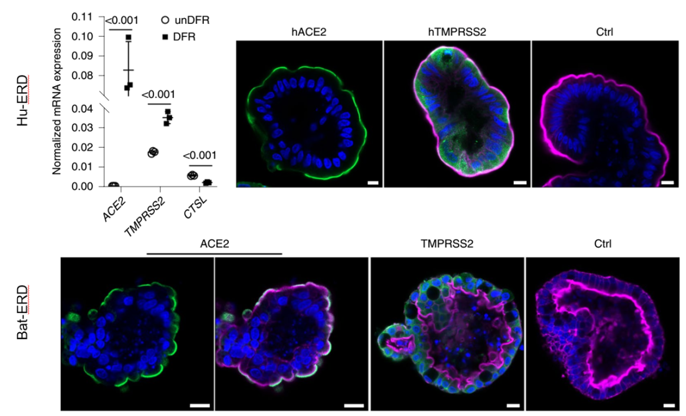Application of organoids in the research of COVID-19 pneumonia
Application of organoids in the research of COVID-19 pneumonia. Due to the global pandemic of the COVID-19 pneumonia, countries around the world have initiated countless COVID-19-related scientific studies.
We can know from hospitalized patients and autopsy that the new coronavirus may cause damage to human organs, but it is not clear whether the related damage is directly caused by the virus or caused by complications after infection.
In order to explore the mechanism and cause of COVID-19 pneumonia For the pathogenesis, most researchers construct infection models in vitro (mainly animal models and 2D cell line culture models).
However, the infection target of the animal model is too different from that of humans, and it cannot fully simulate the process of the new coronavirus infecting the human body.
The cell line culture model is quite different from the in vivo results.
Therefore, these two models cannot clarify the mechanism of virus invasion, infection process, and clinical manifestation, which has brought bottlenecks to the development of specific targeted treatments for COVID-19 pneumonia and related drugs.
Organoids are the 3D culture of cells with stem potential in vitro to form similar tissues of corresponding organs, and have self-renewal and self-organization capabilities, which can highly simulate the physiological structure and functional characteristics of their source tissues. It can fill the gap between in vitro (cell line) and in vivo (animal model) research.
As of September, more than 20 articles and review reviews on the use of organoid technology to study COVID-19 pneumonia have been published.
Organoids have shown their skills in the study of new coronaviruses.
Multiple scientific research teams have used organoids to analyze the effects of new coronaviruses on the lungs. , Liver, kidney, intestine and other human organs, and use these organs to test potential treatments for COVID-19 pneumonia.
This article screened several articles and did a brief analysis, hoping to bring some inspiration to everyone in the process of research on COVID-19 pneumonia.
| Accroding to news from Dingxiangyuan |
|
|
| Table 1: A review of articles and reviews using organoid technology to study COVID-19 pneumonia |
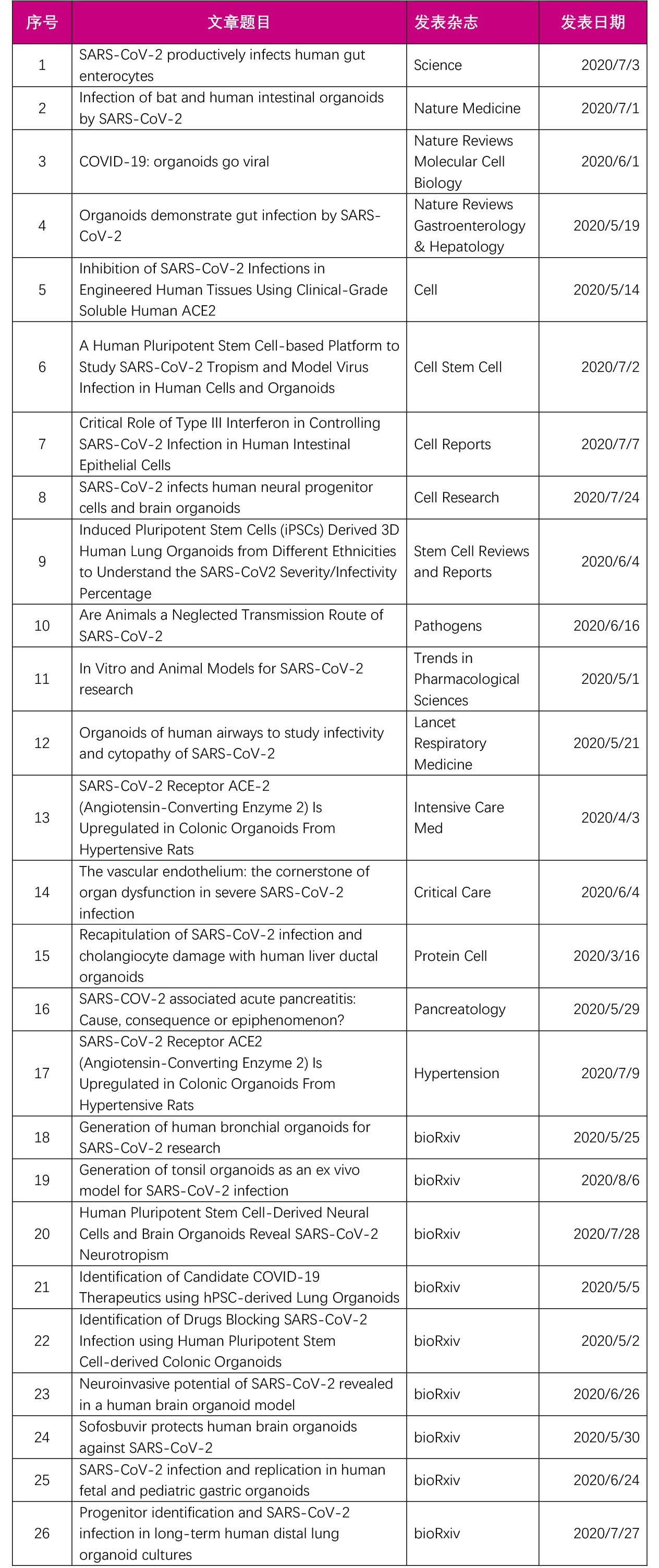 |
01 |
|
On March 16, Fudan University, the Institute of Basic Medicine, Chinese Academy of Medical Sciences and other institutions jointly published an article entitled “Recapitulation of SARS-CoV-2 infection and cholangiocyte damage with human liver ductal organoids” on the biological preprint platform bioRxiv. The SARS-COV-2 infection model of human liver organoids was established. This is the first study using organoids for COVID-19 pneumonia. They discovered the mechanism of the new coronavirus attacking the human liver, which was determined by the liver organoid model constructed in vitro SARS-COV-2 can infect bile duct cells and down-regulate the expression of tight junctions and bile acid transport-related genes in bile duct tissues, and suggests that bile duct dysfunction may be the cause of liver damage in some patients infected with the new coronavirus. In addition, SARS-COV- 2 The expression of apoptosis-related factors in infected organoids is up-regulated, which provides an important tool for the study of neocoronavirus cell tropism, pathogenic mechanism and subsequent drug development.
|
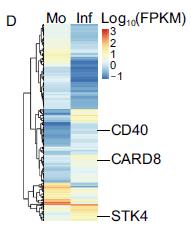 |
|
Apoptosis-related factors: CD40, apoptosis enhancing domain protein 8 (CARD8), serine/threonine kinase 4 (STK4) are up-regulated!
|
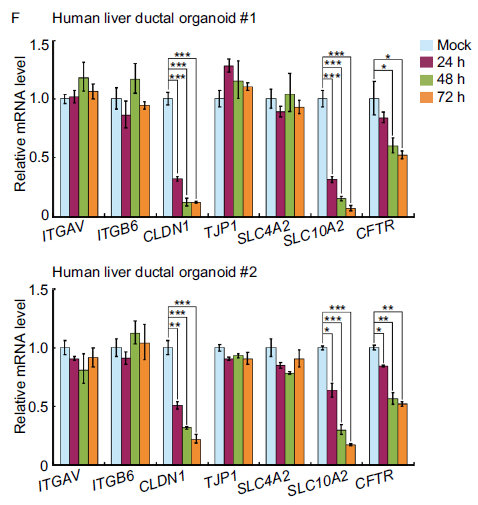 |
| CLDN1: tight junction protein; CFTR: bile transporter |
02 |
|
On May 5th, the article entitled “Identification of Candidate COVID-19 Therapeutics using hPSC-derived Lung Organoids” published by the team of Yuling Han of Cornell Hospital in the biological preprint bioRxiv, the world’s first report on the use of lung Organoid model studies COVID-19 and the screening of therapeutic drugs. Yuling Han’s team established a SARS-CoV-2 infection model of human lung organs and successfully verified that three drugs approved by the FDA to treat COVID-19 infection are effective in this lung organ model. P rior to this, SARS-CoV-2 infected cell lines were used to screen drugs. However, it is difficult for cell lines to simulate the behavior of tissue cells in the pathophysiological process of the virus after infection, and SARS-CoV-2 infected human organs can partly It simulates real organ signals, so the drugs screened by this method have more clinical significance.
|
 |
|
Detection results of SARS-CoV-2 DNA and SARS-S protein content in lung organoids
|
 |
03 |
|
On May 13, the Yuan Guoyong team of the University of Hong Kong published a research paper entitled “Infection of bat and human intestinal organoids by SARS-CoV-2” in Nature Medcine. The study found that the new coronavirus SARS-CoV-2 can infect humans and Intestinal organs of bats, and can maintain a strong virus replication ability. This study provides evidence that SARS-CoV-2 can infect human and bat intestinal cells. The strong replication of SARS-CoV-2 in human intestinal organoids indicates that SARS-CoV-2 may be transmitted through the host intestine.
Researchers co-culture the nasopharyngeal aspirate obtained from COVID-19 patients with human or bat intestinal organoids and reinfect the organoids with the culture supernatant. The results show that the viral load in the intestinal organoids Rapid increase over time.
In addition, the researchers also found that in induced differentiation of human intestinal organoids, the transcription and expression levels of ACE2 and TMPRSS2 required for SARS-CoV-2 to invade host cells were significantly increased. ACE2 and TMPRSS2 proteins are also distributed in bat intestinal organoids.
|
04 |
|
On April 24, the team of Professor Josef Penninger from Columbia University published an article entitled “Inhibition of SARS-CoV-2 Infections in Engineered Human Tissues Using Clinical-Grade Soluble Human ACE2” in the main journal of Cell.
Human blood vessels and kidney organoids constructed by human stem cells have found that SARS-CoV-2 can directly infect human blood vessel organs and kidney organoids.
Previous studies have reported that ACE2 was identified as the key recipient of SARS-CoV-2 infection. It is not clear whether human recombinant soluble ACE2 (hrsACE2) will prevent SARS-CoV-2 infection.
The team studied this issue and found that the organoid infection caused by SARS-CoV-2 can be inhibited by hrsACE2, and hrsACE2 inhibits SARS-CoV-2 infection in a dose-dependent manner.
This directly proves that human recombinant soluble angiotensin converting enzyme 2 (hrsACE2) can be used as an antiviral drug for the treatment of COVID-19.
SARS-CoV-2 can directly infect human vascular organs and can be inhibited by hrsACE2
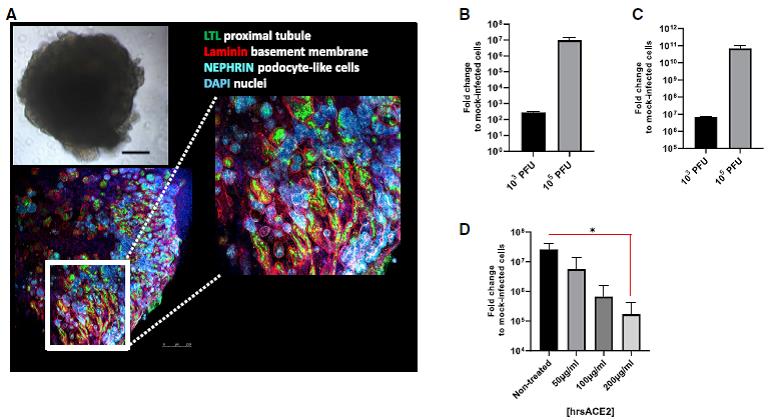 SARS-CoV-2 can directly infect human kidney organs and can be inhibited by hrsACE2
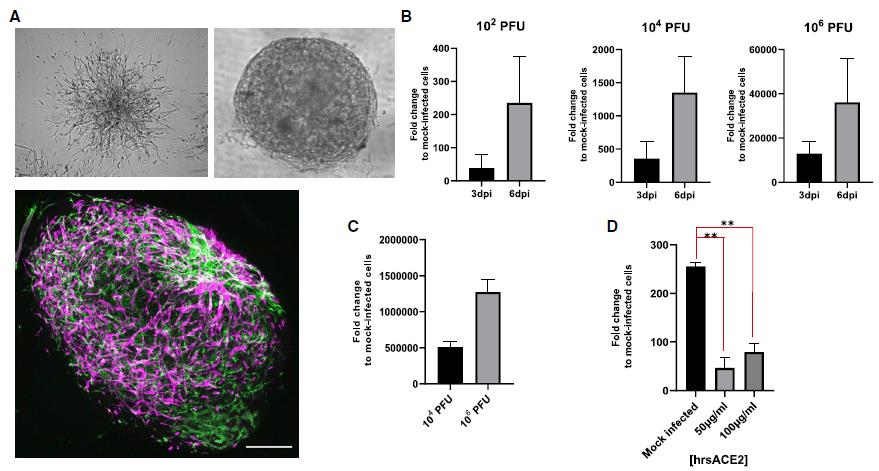 |
05 |
|
On August 4, scientists from the University of Hong Kong and the Shenzhen Institute of Advanced Technology of the Chinese Academy of Sciences published an article “SARS-CoV-2 infects human neural progenitor cells and brain organoids” in Cell Research. The researchers are using pluripotent induced stem cells to produce In a human brain organ, a wide range of viral protein expression and infectious virus particles were detected in the neurospheres and brain organoids infected by SARS-CoV-2. SARS-CoV-2 was infected in 3D human brain organs. Localization of TUJ1 (neural cell marker) and NESTIN (neural stem cell marker) positive cells indicates that SARS-CoV-2 can directly act on cortical neurons and neural stem cells. This study provides direct infection of SARS-CoV in human brain organs -2 The first evidence.
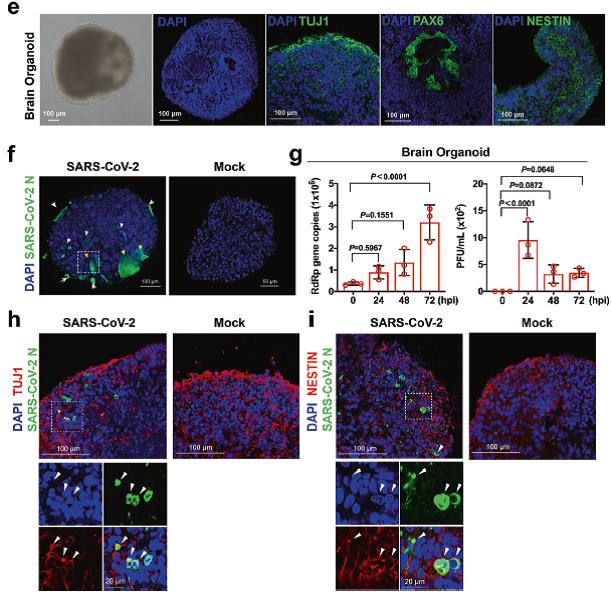 SARS-CoV-2 infects brain organoids and is located in neurons and neural stem cells
|
06 |
|
On May 25th, the team of stem cell biologist Kazuo Takayama from Kyoto University in Japan constructed bronchial organoids containing four different cell types. When SARS-CoV-2 was used to infect bronchial organoids, it was found that the virus mainly attacks stem cells in the organoids , And these stem cells are the source of basal cells. At the same time, they found that the virus cannot easily enter the cell area that secretes protective factors. The team published their research results “Generation of human bronchial organoids for SARS-CoV-2 research” on bioRxiv. |
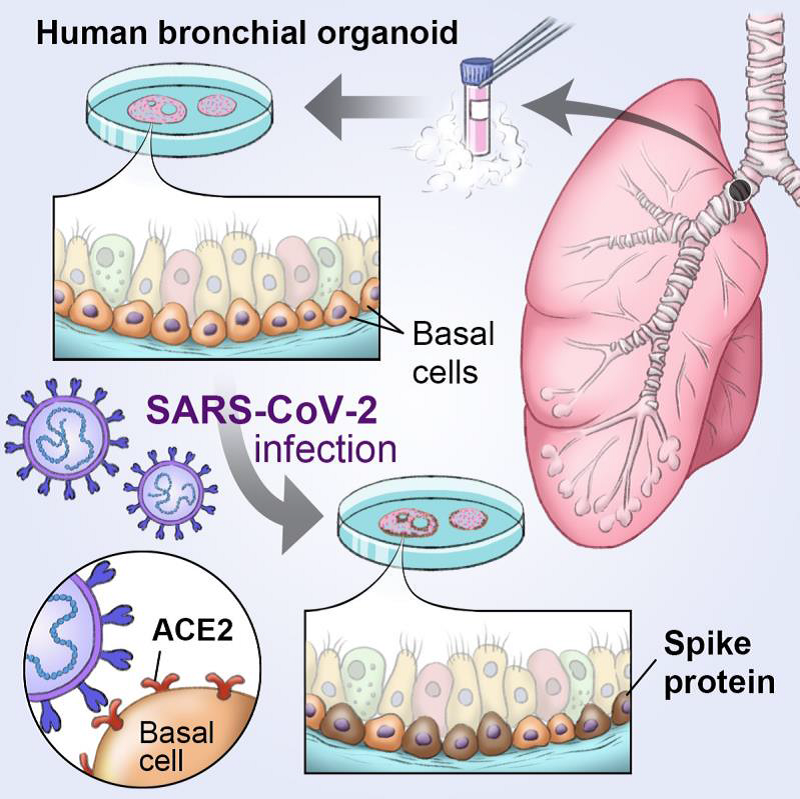 SARS-CoV-2 invades basal cells in bronchial organoids |
07 |
|
On August 6, a scientific team from South Korea published the research results of “Generation of tonsil organoids as an ex vivo 1 model for SARS-CoV-2 infection” on the biological preprint platform bioRxiv. They used cells derived from human tonsil tissue to establish Tonsil epithelial cell-derived organoids have similar cell composition, histological properties, and molecular level expression to tonsil tissues. They can be used as an in vitro SARS-CoV-2 infection model study and can be used for preclinical screening of new antiviral drug candidates.
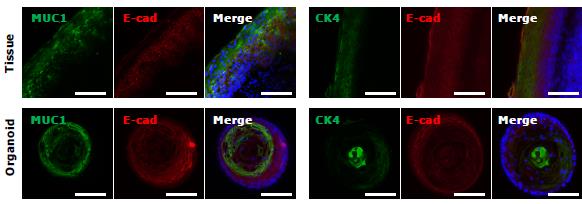 |
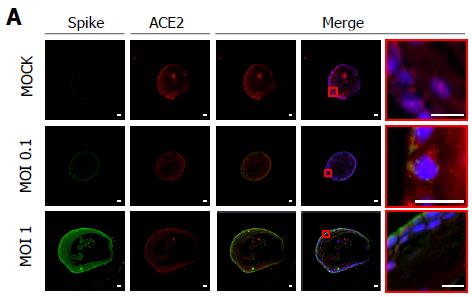 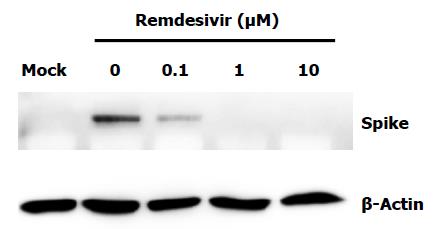 |
| SARS-CoV-2 can infect human tonsil organoids, this model can be used for drug screening in vitro |
|
Traditional virus research tools use cell lines or experimental animals, but they cannot effectively simulate the process of new coronavirus infection and the real occurrence in the body. Organoids, because they look like real tissues, will contain multiple cell types after growth, and The in vitro culture cycle is short, so it can better reflect the impact of the new coronavirus on human tissues. The above examples show that organoids have become a powerful tool for new coronavirus research. In recent years, organoid technology has developed rapidly and has been widely used in the study of organ development, disease model construction, drug screening, and personalized medicine. In 2013, Science Magazine evaluated organoid technology as one of the top ten progresses of the year. In 2017, the organoid technology was rated as one of the top ten technological breakthroughs of the year by Nature Method. 》The cover of the magazine! In September 2019, Dutch scientist Hans Clevers won the Citation Laureate known as the “Nobel Prize Weathervane” for his pioneering work in organoid research, indicating that organoid technology is expected to win even greater awards in the future. As more research results on organoids are published, organoid technology will continue to set off a research boom worldwide.
(source:internet, reference only) |
Disclaimer of medicaltrend.org
Important Note: The information provided is for informational purposes only and should not be considered as medical advice.
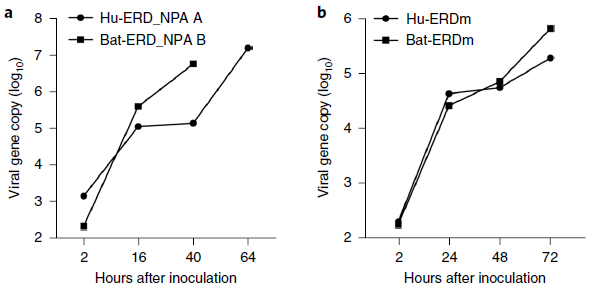 SARS-CoV-2 proliferates in bat and human intestinal organoids
SARS-CoV-2 proliferates in bat and human intestinal organoids